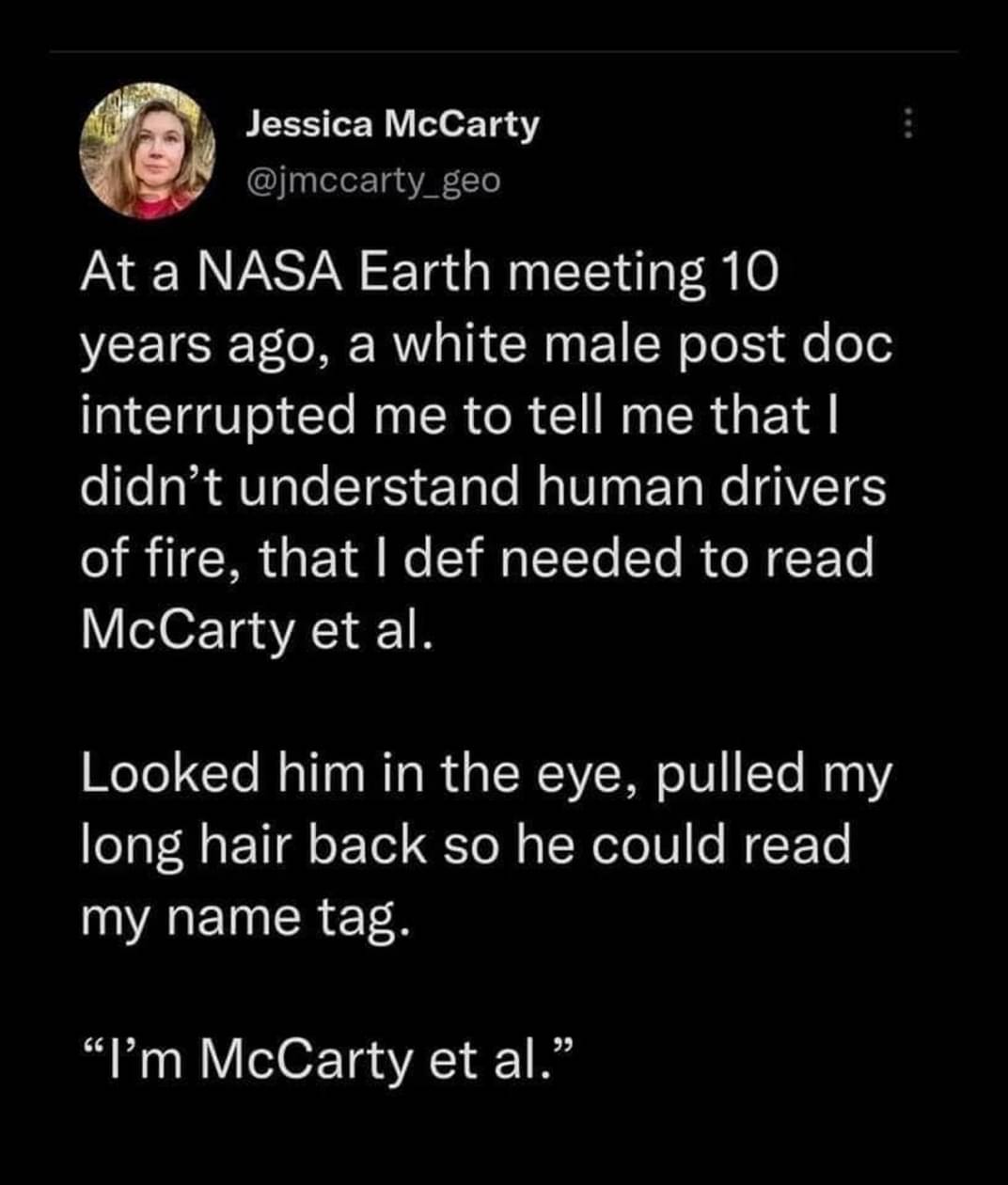this post was submitted on 21 Mar 2024
1418 points (95.0% liked)
Science Memes
11440 readers
275 users here now
Welcome to c/science_memes @ Mander.xyz!
A place for majestic STEMLORD peacocking, as well as memes about the realities of working in a lab.

Rules
- Don't throw mud. Behave like an intellectual and remember the human.
- Keep it rooted (on topic).
- No spam.
- Infographics welcome, get schooled.
This is a science community. We use the Dawkins definition of meme.
Research Committee
Other Mander Communities
Science and Research
Biology and Life Sciences
- [email protected]
- [email protected]
- [email protected]
- [email protected]
- [email protected]
- [email protected]
- [email protected]
- [email protected]
- [email protected]
- [email protected]
- [email protected]
- [email protected]
- [email protected]
- [email protected]
- [email protected]
- [email protected]
- [email protected]
- [email protected]
- [email protected]
- [email protected]
- [email protected]
- [email protected]
- [email protected]
- [email protected]
- !reptiles and [email protected]
Physical Sciences
- [email protected]
- [email protected]
- [email protected]
- [email protected]
- [email protected]
- [email protected]
- [email protected]
- [email protected]
- [email protected]
Humanities and Social Sciences
Practical and Applied Sciences
- !exercise-and [email protected]
- [email protected]
- !self [email protected]
- [email protected]
- [email protected]
- [email protected]
Memes
Miscellaneous
founded 2 years ago
MODERATORS
you are viewing a single comment's thread
view the rest of the comments
view the rest of the comments

Are... are you McCarty et al., TropicalDingdong?
edit: [email protected]
No no no, I'm an et al, just no any of those particular et al. I focus on wildfire risk and have read much on the topic. I've read McCarty and many more when it comes to understanding wildfire and wildfire risk. Some of my research focuses on wildfire risk, and spatial features as they relate to wildfire risk, so drivers becomes pretty important when it comes to wildfire risk modeling. I have taken several courses through NASA on the matter even though I don't focus on drivers directly.
This is the kind of thing I'm working on:
The nodes are features, the edges are weights. In this case I'm just looking at structure:structure risk.
I'm sorry, but you obviously don't understand wildfires. You should really try reading Tropical Dingdongs, Esq.
When you refer to that diagram, is it a way of gauging fire spread risk? Like this grill could start a medium sized fire, and it's close to a shed which could become big fire, and that could spread to house, etc, etc?
So to be clear, I'm not trying to model spread. I'm taking a pretty different approach which is to look at metrics I can derive from an entire network, like centrality and modularity, and use those to predict the overall probability of survival. I'm not trying to say where or how a fire might progress through a network, but rather looking at the overall structure of a network at, for example the parcel resolution, to estimate the likely hood that a given structure might survive a wildfire.
So in the above figure, (it was literally a screen cap of what I had on at that moment, so no effort into graphic design etc.), the diameter of the circle corresponds to the exposure, which is weighted by the total facing. The units on the edges are kilojoules per m^2 per 300 seconds. The circles are on the 'receiving' side of the network (this is a directed kpartite network, and we're only looking at structure:structure edges).
So you can imagine that if you stand with your face to a campfire, you receive more radiation than if you stand edgeways. Likewise if you take a step back. Same principal. I'm not adjusting the edge weights for structural composition or construction (although I'd like to. in the metaphore, all the campfires are the same size and intensity). This is just assuming that each structure will put out about the same amount of energy when burning. However, because of the physical arrangement of things in space, they do not necessarily all experience the same exposure. We can use those differences to create a set of weights, and then by looking at how 'modular' the system is at a given exposure rating (IE, how fully connected is the graph at a given kJ/m2), we might find that the network breaks into some interesting or predictive components.
So, very long answer, but trying to make it shorter: I'm not trying to model spread or predict how fire would move through this system. I'm trying to come up with an overall probabilistic assessment or risk based on how 'connected' features are in space.
Well that's pretty cool, thanks for sharing! :D To repeat to check my understanding, you're looking at where structures are relative to other structures, their shape and orientation, and how that goes together in a big system to influence general structure survival in a wildfire situation.
Do you foresee the outcome being something where you could "tune" a neighborhood to be more survivable, or would it end up with too many combinations to be viable?
yeah so there was a nature publication last year basically demonstrating this, however, they were working on 30 meter pixels.
I kinda got scooped, but I was always working in much higher resolution data.
But basically yeah. We can look at the network and identify where it can be hardened in or broken apart to be make more resistant.
Cool! I have no idea what any of that means, but cool! I get the feeling that you really enjoy what you do, and if that's the case I'm glad for you :3
I'm going to ~~steal~~ cite this. I guess it'll be 'et al et al.'
I think the fact every car is white is a feature.